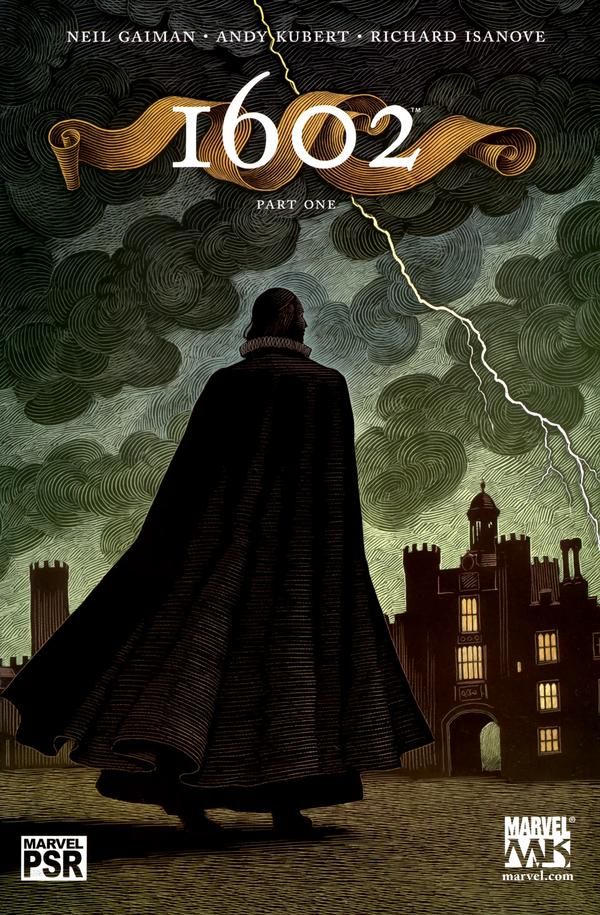Tuesday, February 5, 2013
Graphic Novels Challenge: Marvel 1602
Whereas DC Comics has its Elsewhere books, Marvel Comics had its What If? series. Rather than creating an alternate world like the Elseworlds books, most of the What If? stories explored a diverging timeline beginning at a point in the mainstream Marvel continuity, producing such groundbreaking comics as What If Conan Walked the Earth Today? and What If the Original Marvel Bullpen Had Become the Fantastic Four? Most of the What If? titles are one-offs, with a few short arcs, but beyond the point of divergence, there is no lasting or meaningful connection to the Marvel Universe. They are speculative fantasies.
It would be easy to confuse 1602 with a What If? or even an Elseworlds title, but it's neither, really. It's a consequence arising from an event in the future continuity of the Marvel Universe, in which the heroes exist on Earth some four hundred or so years earlier. In the Earth of 1602, Queen Elizabeth charges two of her royal councillors, spymaster Sir Nicholas Fury and court physician Dr. Stephen Strange, to discern the meaning of disturbing (un)natural phenomena plaguing her realm.
Neil Gaiman does a fascinating job bringing these heroic alter-egos to life, far better than Chuck Dixon did in the Captain Leatherwing book; with a few exceptions, the characters feel real in their setting, perhaps because the setting allows the cruft of expectations built up around about these too-familiar heroes to be stripped away. They are reborn, and they are, for the most part, better for it. Nick Fury as the alternate Sir Francis Walsingham is brilliantly written, as is Matthew Murdoch as one of his agents, but my favorite character, both in 1602 and the Marvel Universe generally, is Dr. Strange. This is one of the very best Dr. Strange books I've read; the Sorcerer Supreme is singularly suited to both the period and Mr Gaiman's tale of supernatural intrigue.
And it is a tale of intrigue. There are only a handful of battles between heroes and villains in 1602. This is a story of an existential threat and the ramifications of it, and if the ending doesn't quite live up to the events which preceded it, it is satisfying nonetheless.
Andy Kubert and Richard Isanove's artwork is dark and claustrophobic and lush, and their depiction of the characters and the setting evocative and period-worthy, though I found the digital coloring to have a weird sort of soft-focus feel at times.
Subscribe to:
Post Comments (Atom)



Not a big comics fan, but 1602 is one of my favorites and the best Marvel I've ever read.
ReplyDelete1602 is one of my favorites as well. I agree that Gaiman's heroic alter-egos were very cleverly done, blending organically into the Elizabethan setting in a way that could easily have been gimmicky.
ReplyDelete